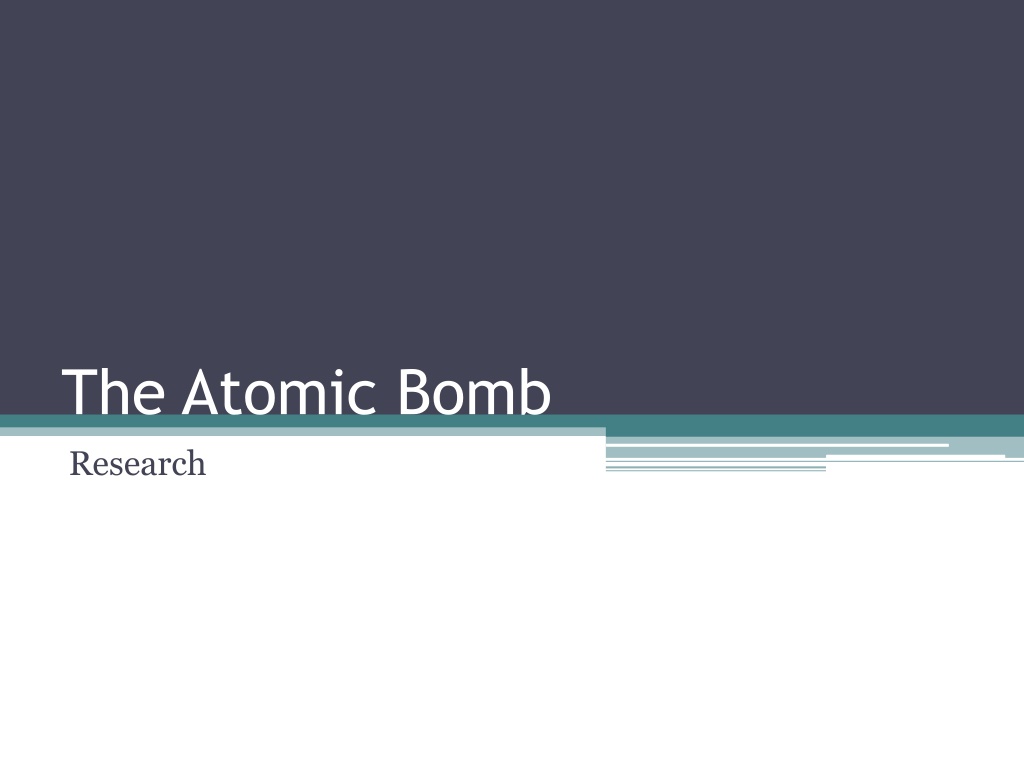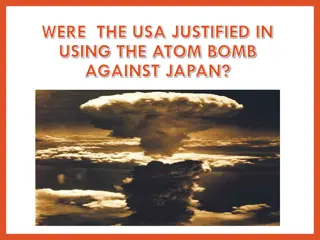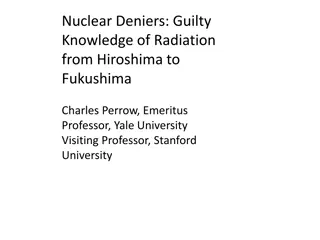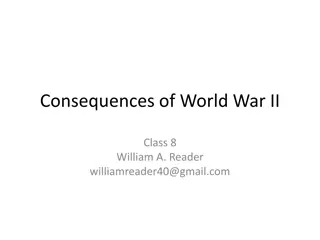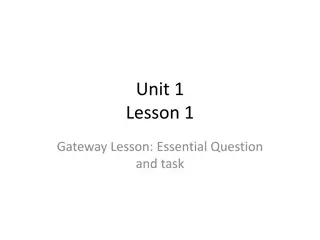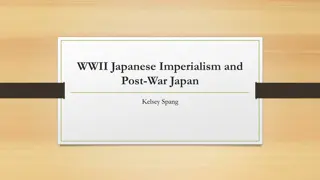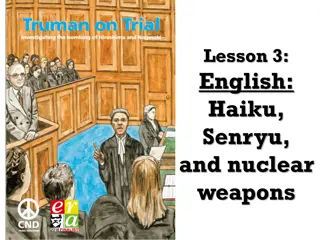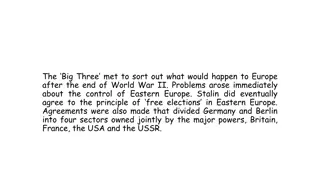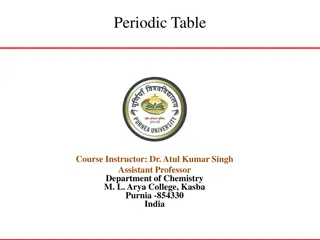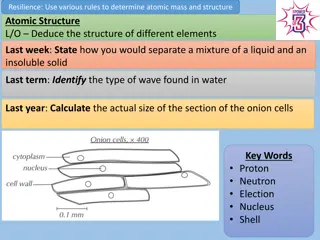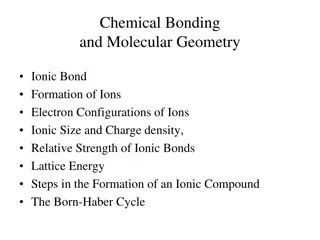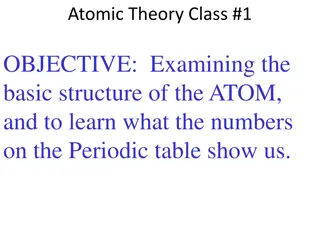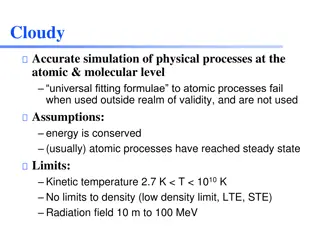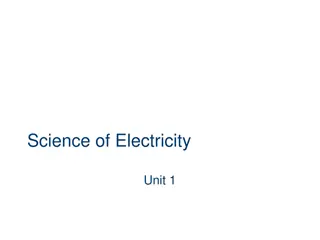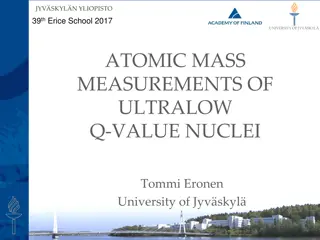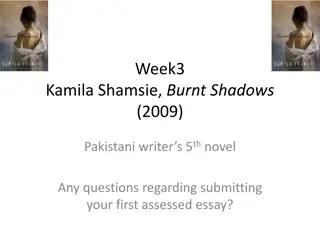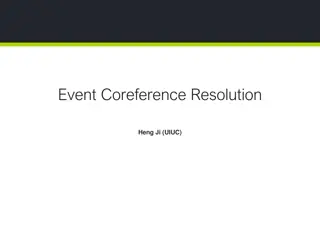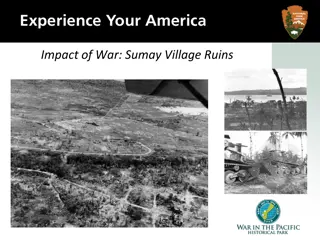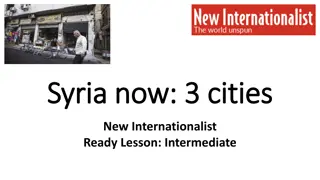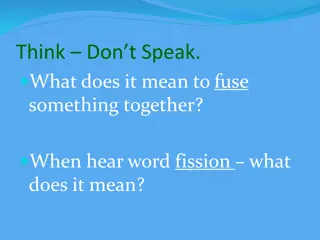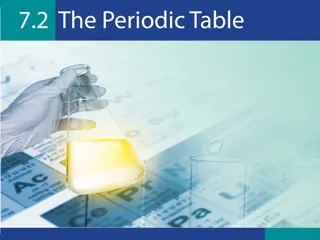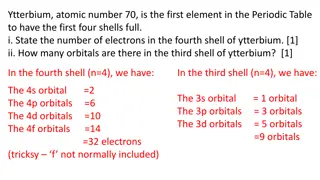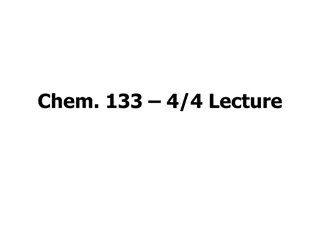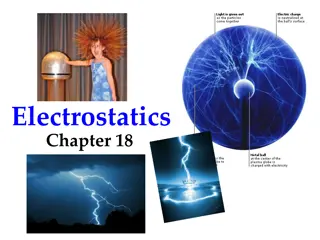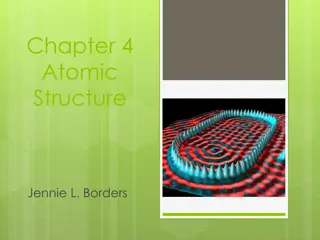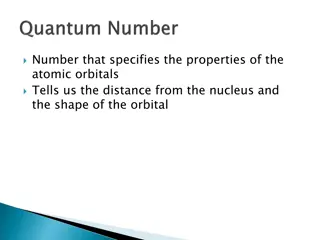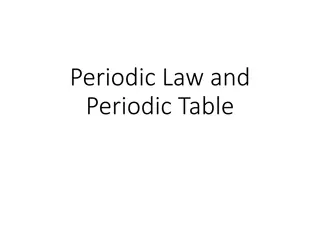Understanding the Atomic Bombings of Hiroshima and Nagasaki
Explore the events leading up to and following the dropping of atomic bombs on Hiroshima and Nagasaki, including key dates, casualties, bomb effects, and the ongoing debate on the justification of using such weapons. Dive into the destructive power, heat, and blast effects of atomic bombs, shedding light on the devastating consequences of nuclear warfare.
Download Presentation

Please find below an Image/Link to download the presentation.
The content on the website is provided AS IS for your information and personal use only. It may not be sold, licensed, or shared on other websites without obtaining consent from the author. Download presentation by click this link. If you encounter any issues during the download, it is possible that the publisher has removed the file from their server.
E N D
Presentation Transcript
The Atomic Bomb Research
Instructions Step 1: Review the background information on the atomic bomb in this presentation. Step 2: Using AT LEAST 2 different sources, research the atomic bombing of Hiroshima and Nagasaki and complete the informational chart. You will be compiling essential factual information on the two bombings (names, dates, casualties, bomb effects, etc). Step 3: you will compile information on the eternal debate on whether the atomic bombs should have been used. Be sure that you have solid information for BOTH sides of the debate (Pro and Con). Make sure to cite your 2+ sources
Key Events Tied to Atomic Bombings May 25, 1945 - U.S. Joint Chiefs of Staff approve Operation Olympic, the invasion of Japan, scheduled for November 1. June 9, 1945 - Japanese Premier Suzuki announces Japan will fight to the very end rather than accept unconditional surrender. July 16, 1945 - First Atomic Bomb is successfully tested in the U.S. August 6, 1945 - First Atomic Bomb dropped on Hiroshima. August 8, 1945 - U.S.S.R. declares war on Japan then invades Manchuria. August 9, 1945 - Second Atomic Bomb is dropped on Nagasaki; Emperor Hirohito and Japanese Prime Minister Suzuki then decide to seek an immediate peace with the Allies. August 14, 1945 - Japanese accept unconditional surrender September 2, 1945 - Formal Japanese surrender; President Truman declares VJ Day.
What is an Atomic Bomb? The word A-Bomb is used to describe the nuclear bombs dropped on both Hiroshima and Nagasaki. These early nuclear weapons used nuclear fission (splitting of atoms/ Plutonium & Uranium) to create the atomic blast.
Bomb Effects Perimeter
What happens when you drop an atomic bomb???
Atomic Heat On the ground, beneath the explosion center(hypocenter), the temperature rose to approximately 7,000 degree F. Roof (ceramic) tiles on houses within 1/3 mile radius from the explosion center melted, and gray stones which contained silicon particles became white. The clothes which people wore were burnt by the heat within 1 1/4 mile radius from the explosion center. Humans and other animate objects absorbed heat when in vicinity more than inanimate objects.
Bomb Blast (Atomic Wind) An ultra high pressure was generated by the explosion. The wind velocity on the ground beneath the explosion center was 980 miles/hr, which is five times stronger than the wind generated by strong hurricanes. At a point that was 1/3 mile from the explosion center, the wind velocity was 620 miles/hr; the pressure was 4,600 pound per square feet. Most of concrete buildings inside this range were completely destroyed. Even a mile from the explosion center, where the wind velocity was 190 miles/hr and the pressure was 1,180 pound per square feet, all brick buildings were completely destroyed.
Destruction of a House Blast Wave Blast Wave Blast Wave Blast Wave Blast Wave Blast Wave Blast Wave Blast Wave
Radiation The explosion generated Alpha, Beta, Gamma and neutron rays. Alpha and Beta rays were absorbed by the air and did not reach to the ground. Gamma and neutron rays were strong enough to reach the ground; thus it was these rays that affected people Within 1/16 mile radius from the explosion center, most people died within a few hours (even in the case where they were not directly exposed to the heat or wind). Within a half mile radius, most people died within 30 days after the explosion. The people who entered the area within a half mile radius from the explosion center in the first 100 hours after the explosion were also affected by the remaining radiation on the ground.
Hiroshima Fatalities By the end of 1945 the estimated number of people who died as a direct result of the bomb was 140,000. For the period 1946 to 1951 the number of deaths due to the bomb was estimated at 60,000. It has been concluded that the number of people who died as a direct result of the bomb was approximately 200,000.
Nagasaki Statistics By the end of 1945 the estimated number of people who died as a direct result of the bomb was 60,000. After 1945 the number of deaths due to the bomb was estimated at 20,000. It has been concluded that the number of people who died as a direct result of the bomb was approximately 80,000.
Keloid Scars from Victim 1 mile from Epicenter
Reminders of After Effects After effects killed younger brother in 1949; his sister in 1965
Other Long Term After Effects on Survivors Cancer Infertility Birth defects PTSD
The Eternal Debate (Pro) Public Reasons End war quickly Avoid invasion Save US troops lives Retribution (Press) Political/Covert Reasons Establish position as world leader Test effects of weaponry on humans & urban setting Avoid Soviet entrance into war Retribution
The Eternal Debate (Con) Morality?
